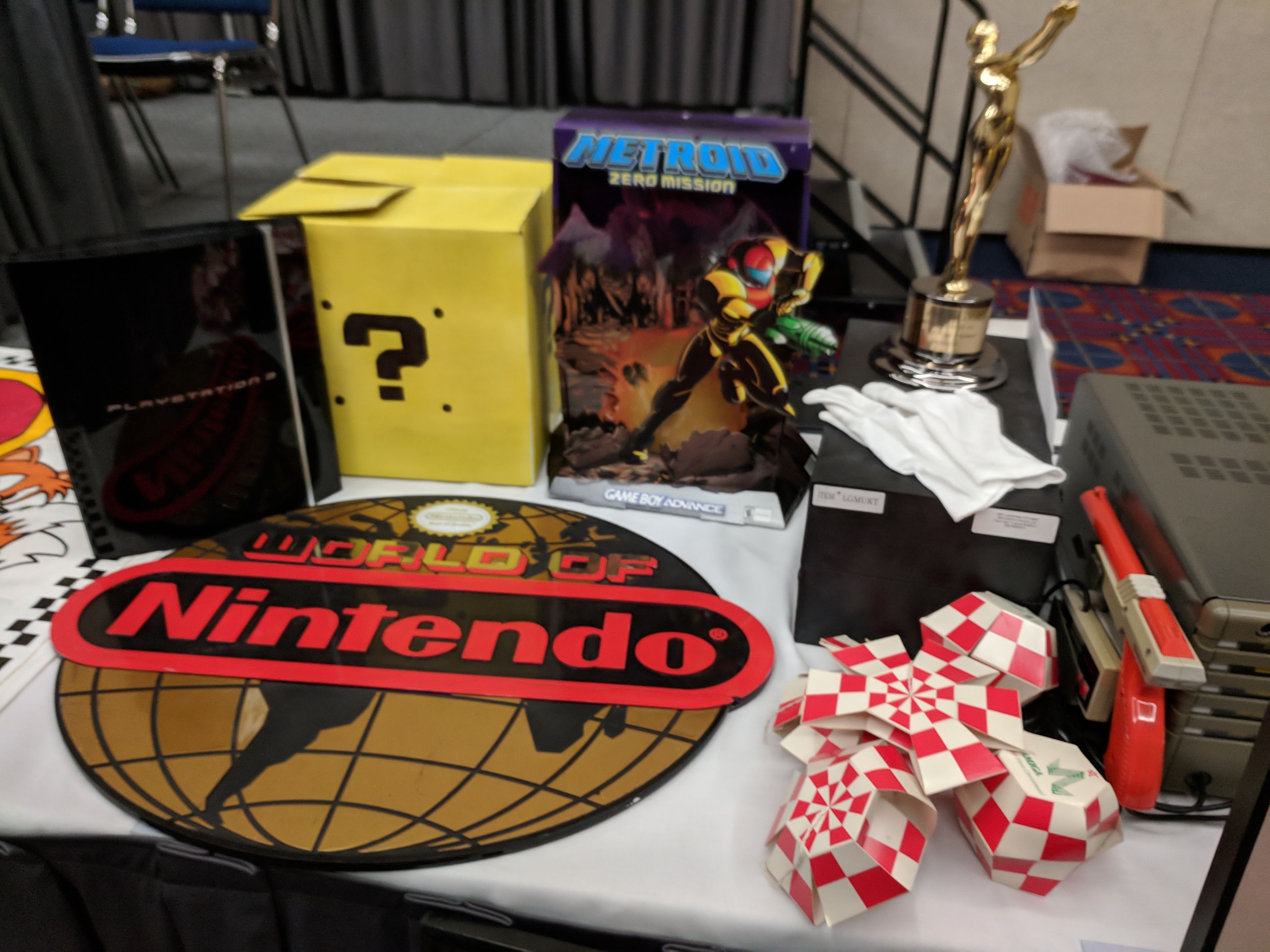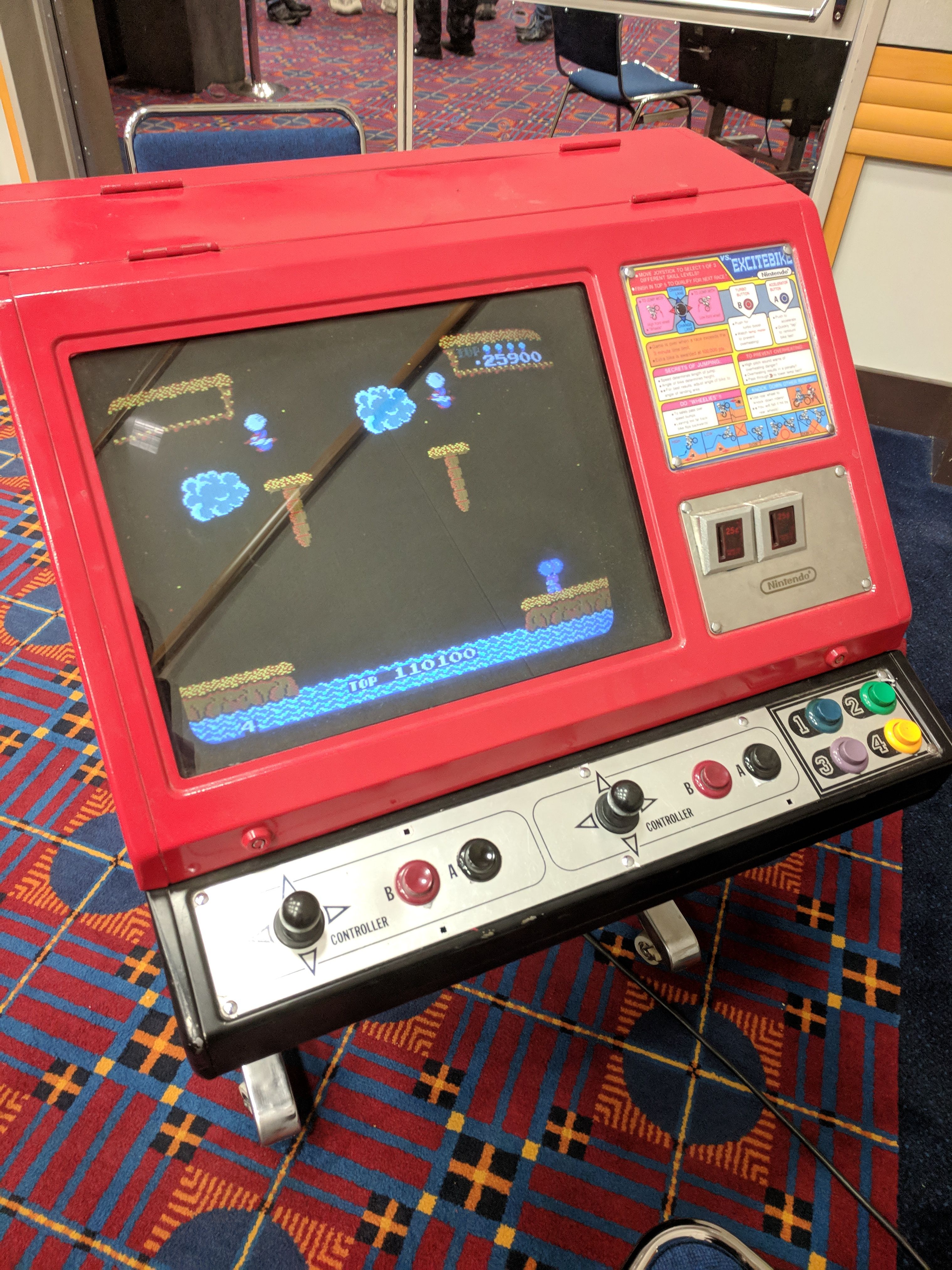Saturday, the final day at the Portland Retro Gaming Expo, meant the opening of the exhibition created by the good folks at The Video Game History Foundation that focuses on the Nintendo Entertainment Systems history. From Nintendo's beginnings creating board and card games to the NES Classic and other hardware emulators, the very long history of the NES was all on display for attendees of the show to enjoy.
The middle of the room contained transparent shelving that alphabetized the complete NES library thanks to the coordination of multiple collectors donating their games and cases to the Foundation for display. As noted by The Video Game History Foundation's Steve Lin, this may be the only time the complete library is put together in one place due to the cooperation and planning that was required to make it happen.
Several unreleased NES games appeared as playable titles, including Sim City and Earthbound among others. Some classic NES games were playable as well, including Super Mario Bros. and Metroid: a special Balloon Fight cabinet was set up as well. Oddly, the instructions on it were for Excitebike, but it played Balloon Fight on either side.
The main feature of this exhibit were the displays of numerous NES ephemera, games, promotional materials, and other miscellaneous related items that were laid out in a timeline complete with text commentary. Displays included Donkey Kong and its related merchandise, the original Famicom prototypes with square buttons on the controller, a Game & Watch unit, displays showing the NES launch in New York City, a complete collection of the black box NES cases, copies of Fun Club News, unlicensed games and ROM hacks, remakes of NES titles on other systems, fan translated ROMs, plug and play systems, and bootleg cartridges. Everything is covered.
[pullquote]"From Nintendo's beginnings creating board and card games to the NES Classic and other hardware emulators, the very long history of the NES was all on display for attendees of the show to enjoy."[/pullquote]
During a panel for the exhibit held on Sunday, October 14, the Video Game History Foundation's founder Frank Cifaldi got to speak about the exhibit. He began with how Nintendo is a 19th century company that got its start by selling playing cards made in Japan to the West, and was the first Far East company to distribute in the United States. They eventually created roulette boards, a love test toy (that showed Frank and his wife weren't compatible), and the Game & Watch. He stated how Donkey Kong was their first arcade hit, and that the museum included a hand-drawn animation cell from the commercial for the Donkey Kong cereal that was broadcast in the early '80s. Cifaldi added that Game & Watch was the first instance of the d-pad being implemented on Nintendo hardware.
Due to the Famicom being marketed as a family computer, it was sold with a keyboard for basic so people could program their own games, as well as a cassette data recorder to save their work. Some early marketing to the West included the VS system for arcades. In 1983, there was the great video game crash in the US and UK, during which Nintendo pitched Atari to distribute their Famicom system. Another early marketing attempt by Nintendo was as a video system focused on video accessories, but this also failed. Finally in 1985, it was sold as a toy in New York, with a t-shirt from that launch party included in their exhibit. A register card included with the NES led to the Fun Club News magazine that reached 3 million readers in circulation, and would eventually become Nintendo Power.
The exhibit included lots of ephemera that shows the Nintendo-mania that gripped the world in 1987 onwards. This includes things such as paper plates, napkins, various coverage in non-Nintendo media, licensed movies like 1993's Super Mario Bros. and a big advertisement for Super Mario Bros. 3 called The Wizard. 1994 was not the end of the NES, as it expanded into non-Western markets thanks to its low price and being easy to develop for. Knockoffs and clones flooded places like Hong Kong with bootleg games and down-ports of things like The Legend of Zelda: Oracle of Ages/Seasons, Pocahontas, and Final Fantasy VII. The NES also had a lot of educational usage that extended its lifespan beyond the '80s and '90s. For these reasons, there has been no year without a commercial NES game released.
[pullquote]"Where the NES will go from here is unknown, though it will probably continue to stick around like it already has for the past 35 years."[/pullquote]
Emulation, homebrew, fan translations, ROMhacks, and plug & play systems paved the way for things like the Atari and Intellivision Flashbacks, which were just reprogrammed NES consoles. People have even made music on NES cartridges, and Nintendo themselves hired an NES emulator engineer to help them create the first emulator that appeared in Animal Crossing, and then on the GBA with its rereleases of NES games. Cartridges have been reissued, previously unreleased games have come out, and even things like the mini-game in Golf Story, "GALF," is sold on an NES cartridge. Where the NES will go from here is unknown, though it will probably continue to stick around like it already has for the past 35 years.
Most of the "35 Years of the NES & Its Games" exhibit can be viewed in the image gallery below from the Portland Retro Gaming Expo, and the work that The Video Game History Foundation does can be found, and supported, on their website. For more from Portland Retro Gaming Expo, you can check out our previous features from Day 1, 2, and 3 from the show.



